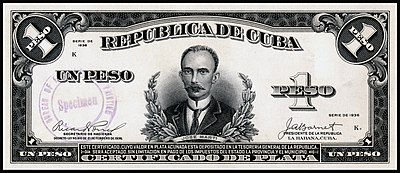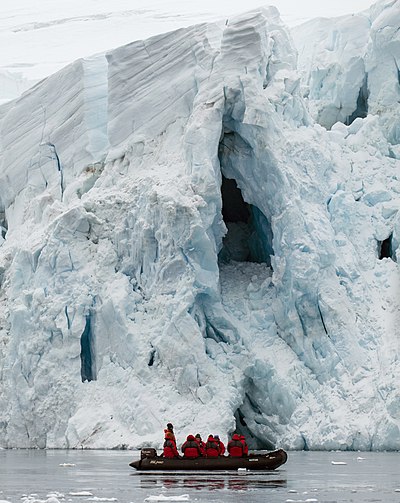Template:POTD default/testcases
| This is the template test cases page for the sandbox of Template:POTD default. to update the examples. If there are many examples of a complicated template, later ones may break due to limits in MediaWiki; see the HTML comment "NewPP limit report" in the rendered page. You can also use Special:ExpandTemplates to examine the results of template uses. You can test how this page looks in the different skins and parsers with these links: |
Caption on right[edit]
|size= < 400
{{POTD/2017-08-01|{{Remove first word|POTD default}}}}
| {{POTD default}} | {{POTD default/sandbox}} |
|---|---|
|
The Colorado coat of arms in 1876, as illustrated by Henry Mitchell in State Arms of the Union. The modern Seal of Colorado, an adaptation of the Territorial Seal adopted by the First Territorial Assembly in 1861, and similar to the coat of arms, was adopted a year after this illustration was published. The coat of arms includes the following devices: the Eye of Providence or 'All Seeing Eye' within a triangle, with golden rays radiating; the Roman fasces, a bundle of birch or elm rods with a battle ax bound together with a ribbon; the heraldic shield bearing a red sky behind a mountain and the pick and sledge hammer, crossed on a golden ground. Below the shield, on a scroll, is the motto, "Nil Sine Numine", meaning "Nothing without providence".Illustration: Henry Mitchell; restoration: Andrew Shiva
|
The Colorado coat of arms in 1876, as illustrated by Henry Mitchell in State Arms of the Union. The modern Seal of Colorado, an adaptation of the Territorial Seal adopted by the First Territorial Assembly in 1861, and similar to the coat of arms, was adopted a year after this illustration was published. The coat of arms includes the following devices: the Eye of Providence or 'All Seeing Eye' within a triangle, with golden rays radiating; the Roman fasces, a bundle of birch or elm rods with a battle ax bound together with a ribbon; the heraldic shield bearing a red sky behind a mountain and the pick and sledge hammer, crossed on a golden ground. Below the shield, on a scroll, is the motto, "Nil Sine Numine", meaning "Nothing without providence".Illustration: Henry Mitchell; restoration: Andrew Shiva
|
{{POTD/2017-08-11|{{Remove first word|POTD default}}}}
| {{POTD default}} | {{POTD default/sandbox}} |
|---|---|
|
Barracudasauroides is a genus of mixosaurid ichthyosaur which lived during the Middle Triassic. Fossils of this genus have been found in Guizhou Province, China. It is known from GMPKU-P-1033, a partial skeleton recovered from the Upper Member of the Guanling Formation in the Xinmin.Photograph: Didier Descouens
|
Barracudasauroides is a genus of mixosaurid ichthyosaur which lived during the Middle Triassic. Fossils of this genus have been found in Guizhou Province, China. It is known from GMPKU-P-1033, a partial skeleton recovered from the Upper Member of the Guanling Formation in the Xinmin.Photograph: Didier Descouens
|
Caption on bottom[edit]
|size= ≥ 400
{{POTD/2017-08-20|{{Remove first word|POTD default}}}}
| {{POTD default}} | {{POTD default/sandbox}} |
|---|---|
|
Arrival of the Hungarians is a large cyclorama – a circular panoramic painting – by the Hungarian painter Árpád Feszty and his assistants. It depicts the arrival of the Hungarians in the Carpathian Basin in 895. It was completed in 1894 for the 1000th anniversary of the event. It measures 15 meters (50 feet) in height and almost 120 meters (400 feet) in length. Since 1995, the painting has been displayed in the Ópusztaszer National Heritage Park, Hungary.Painting: Árpád Feszty et al.
|
Arrival of the Hungarians is a large cyclorama – a circular panoramic painting – by the Hungarian painter Árpád Feszty and his assistants. It depicts the arrival of the Hungarians in the Carpathian Basin in 895. It was completed in 1894 for the 1000th anniversary of the event. It measures 15 meters (50 feet) in height and almost 120 meters (400 feet) in length. Since 1995, the painting has been displayed in the Ópusztaszer National Heritage Park, Hungary.Painting: Árpád Feszty et al.
|
Dual pictures[edit]
- Template:POTD/2020-05-06
- Six pairs—reverse and obverse of banknotes. First and the last out of the set are tested below.
{{POTD/2020-05-06|{{Remove first word|POTD default}}|1}}
| {{POTD default}} | {{POTD default/sandbox}} |
|---|---|
|
Silver certificates were issued by the Republic of Cuba between 1934 and 1949. Prior and subsequent issues of Cuban banknotes were engraved and printed by non-governmental private banknote companies in the United States, but the series from 1934 to 1949 was designed, engraved, and printed by the Bureau of Engraving and Printing of the U.S. government.
This is a certified proof of a one-peso silver certificate, prepared in 1936. The obverse depicts Cuban writer José Martí, with the engraved signatures of Ricardo Ponce (Secretary of the Treasury) and José Agripino Barnet (President of the Republic). The reverse, printed in blue, bears the Cuban coat of arms. This proof is part of the National Numismatic Collection at the Smithsonian Institution's National Museum of American History. Other denominations: Banknote design credit: Bureau of Engraving and Printing; engraved by William Ford; photographed by Andrew Shiva |
Silver certificates were issued by the Republic of Cuba between 1934 and 1949. Prior and subsequent issues of Cuban banknotes were engraved and printed by non-governmental private banknote companies in the United States, but the series from 1934 to 1949 was designed, engraved, and printed by the Bureau of Engraving and Printing of the U.S. government.
This is a certified proof of a one-peso silver certificate, prepared in 1936. The obverse depicts Cuban writer José Martí, with the engraved signatures of Ricardo Ponce (Secretary of the Treasury) and José Agripino Barnet (President of the Republic). The reverse, printed in blue, bears the Cuban coat of arms. This proof is part of the National Numismatic Collection at the Smithsonian Institution's National Museum of American History. Other denominations: Banknote design credit: Bureau of Engraving and Printing; engraved by William Ford; photographed by Andrew Shiva |
{{POTD/2020-05-06|{{Remove first word|POTD default}}|6}}
| {{POTD default}} | {{POTD default/sandbox}} |
|---|---|
|
Silver certificates were issued by the Republic of Cuba between 1934 and 1949. Prior and subsequent issues of Cuban banknotes were engraved and printed by non-governmental private banknote companies in the United States, but the series from 1934 to 1949 was designed, engraved, and printed by the Bureau of Engraving and Printing of the U.S. government.
This is a certified proof of a one-hundred-peso silver certificate, prepared in 1936. The obverse depicts Cuban patriot Francisco Vicente Aguilera, with the engraved signatures of Ricardo Ponce (Secretary of the Treasury) and José Agripino Barnet (President of the Republic). The reverse, printed in purple, bears the Cuban coat of arms, flanked by Havana's El Capitolio on the left and Plaza de la Catedral on the right. This proof is part of the National Numismatic Collection at the Smithsonian Institution's National Museum of American History. Other denominations: Banknote design credit: Bureau of Engraving and Printing; engraved by William Ford; photographed by Andrew Shiva |
Silver certificates were issued by the Republic of Cuba between 1934 and 1949. Prior and subsequent issues of Cuban banknotes were engraved and printed by non-governmental private banknote companies in the United States, but the series from 1934 to 1949 was designed, engraved, and printed by the Bureau of Engraving and Printing of the U.S. government.
This is a certified proof of a one-hundred-peso silver certificate, prepared in 1936. The obverse depicts Cuban patriot Francisco Vicente Aguilera, with the engraved signatures of Ricardo Ponce (Secretary of the Treasury) and José Agripino Barnet (President of the Republic). The reverse, printed in purple, bears the Cuban coat of arms, flanked by Havana's El Capitolio on the left and Plaza de la Catedral on the right. This proof is part of the National Numismatic Collection at the Smithsonian Institution's National Museum of American History. Other denominations: Banknote design credit: Bureau of Engraving and Printing; engraved by William Ford; photographed by Andrew Shiva |
- Adapted from Template:POTD/2019-05-23
{{POTD default
|image1=Hope Bay-2016-Trinity Peninsula–Arena Glacier 01.jpg
|image2=Hope Bay-2016-Trinity Peninsula–Arena Glacier 03.jpg
|size=400
|title=[[Arena Glacier]]
|texttitle=Arena Glacier
|alt1=View at a distance
|alt2=Close-up view
|imagelink1=Wfm antarctic peninsula islands.png
|imagelink2=Ant-pen-map-Trinity-Peninsula.PNG
|caption=
'''[[Arena Glacier]]''' is a [[glacier]] located on [[Trinity Peninsula]], the northernmost region of the [[Antarctic Peninsula]]. The glacier is {{convert|3|mi|km|0}} long and flows northeast from [[Mount Taylor (Antarctica)|Mount Taylor]] into [[Hope Bay]], {{convert|2|mi|km|0}} southwest of [[Sheppard Point]]. The [[British Antarctic Survey|Falkland Islands Dependencies Survey]] mapped the area in 1948 and 1955. They also chose the name Arena Glacier, due to the flat ice floor in the upper half, which was surrounded by the steep slopes of the [[Twin Peaks (Antarctica)|Twin Peaks]], Mount Taylor and [[Blade Ridge]], resembling an arena.
|credit=Photograph credit: [[User:Godot13|Andrew Shiva]]
}}
| {{POTD default}} | {{POTD default/sandbox}} |
|---|---|
|
Arena Glacier is a glacier located on Trinity Peninsula, the northernmost region of the Antarctic Peninsula. The glacier is 3 miles (5 km) long and flows northeast from Mount Taylor into Hope Bay, 2 miles (3 km) southwest of Sheppard Point. The Falkland Islands Dependencies Survey mapped the area in 1948 and 1955. They also chose the name Arena Glacier, due to the flat ice floor in the upper half, which was surrounded by the steep slopes of the Twin Peaks, Mount Taylor and Blade Ridge, resembling an arena.Photograph credit: Andrew Shiva
|
Arena Glacier is a glacier located on Trinity Peninsula, the northernmost region of the Antarctic Peninsula. The glacier is 3 miles (5 km) long and flows northeast from Mount Taylor into Hope Bay, 2 miles (3 km) southwest of Sheppard Point. The Falkland Islands Dependencies Survey mapped the area in 1948 and 1955. They also chose the name Arena Glacier, due to the flat ice floor in the upper half, which was surrounded by the steep slopes of the Twin Peaks, Mount Taylor and Blade Ridge, resembling an arena.Photograph credit: Andrew Shiva
|
Tall picture[edit]
- Template:POTD/2014-03-18
- Tall image of a poster.
{{POTD/2014-03-18|{{Remove first word|POTD default}}}}
| {{POTD default}} | {{POTD default/sandbox}} |
|---|---|
|
An advertisement for a 1927 enactment of the Indian rope trick by stage magician Howard Thurston. This form of stage magic is said to have been performed in and around India during the 19th century, though the factuality of this has been disputed.Poster: The Otis Lithograph Co.; Restoration: Adam Cuerden
|
An advertisement for a 1927 enactment of the Indian rope trick by stage magician Howard Thurston. This form of stage magic is said to have been performed in and around India during the 19th century, though the factuality of this has been disputed.Poster: The Otis Lithograph Co.; Restoration: Adam Cuerden
|
Wide picture[edit]
- Template:POTD/2018-02-09
- Wide panorama of La Silla Observatory in Chile.
{{POTD/2018-02-09|{{Remove first word|POTD default}}}}
| {{POTD default}} | {{POTD default/sandbox}} |
|---|---|
|
La Silla Observatory is an astronomical observatory in Chile, some 150 kilometres (93 mi) northeast of La Serena. On this site, at the outskirts of the Atacama Desert, are three telescopes built and operated by the European Southern Observatory (ESO) as well as several other telescopes partly maintained by ESO. The observatory is one of the largest in the southern hemisphere and the first in Chile to be used by ESO.Photograph: ESO/F. Kamphues
|
La Silla Observatory is an astronomical observatory in Chile, some 150 kilometres (93 mi) northeast of La Serena. On this site, at the outskirts of the Atacama Desert, are three telescopes built and operated by the European Southern Observatory (ESO) as well as several other telescopes partly maintained by ESO. The observatory is one of the largest in the southern hemisphere and the first in Chile to be used by ESO.Photograph: ESO/F. Kamphues
|











